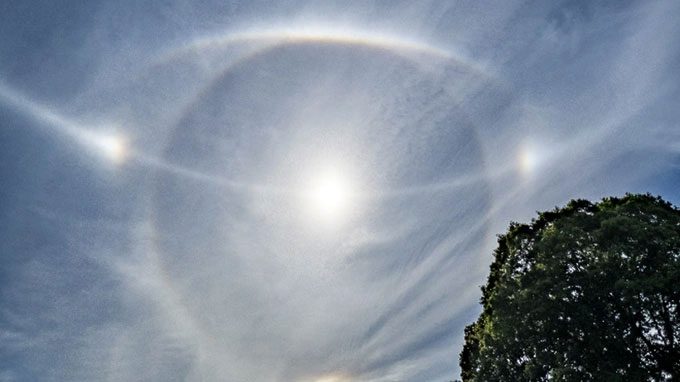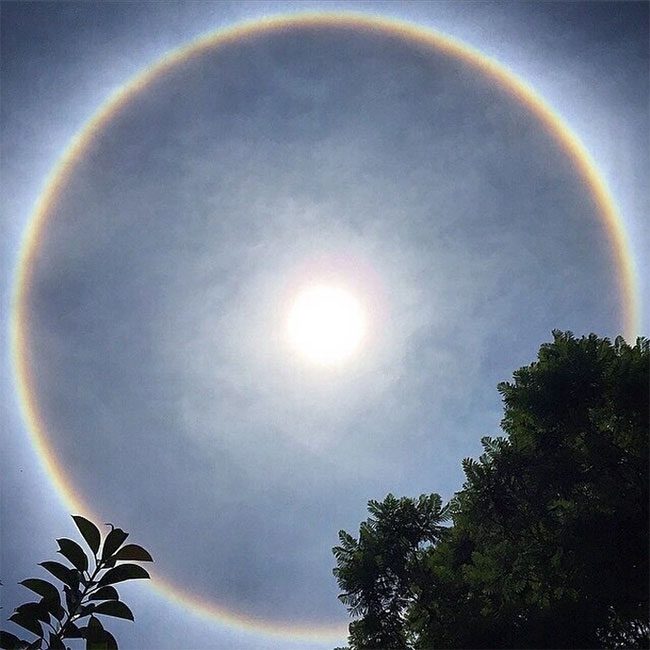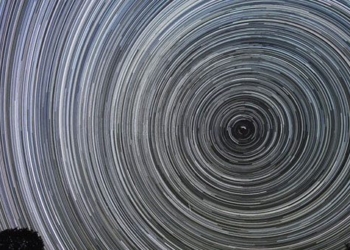You will be extremely lucky if you observe these rare natural phenomena, as they seldom occur.
Fascinating Natural Phenomena Are Not Always Present

A bright halo observed in the sky over Northern Ireland. (Photo: Alan Fitzsimmons).
On May 28, Alan Fitzsimmons, an astronomer at Queen’s University Belfast in Northern Ireland, captured an image of an extraordinary halo above the Belfast Botanic Gardens. According to Alan, this “display” lasted about 30 minutes.
According to Spaceweather.com, several unusual halos were also detected across other regions of Northern Ireland, as well as in northern England and Scotland.
Observers reported that this is an optical phenomenon known as a halo, created by sunlight interacting with suspended ice crystals in the atmosphere.
However, there are many types of halos. Some halos occur quite commonly, while others appear very rarely.
Spaceweather noted that the image captured by Fitzsimmons includes at least three different confirmed optical phenomena, including a large circle surrounding the sun (also known as a 22-degree halo), a halo forming a sun dog, and a halo creating a perfect circle (parhelic).
Among these, the parhelic halo is the rarest, as it requires at least five instances of refraction within millions of individual ice crystals, all capturing sunlight simultaneously.
Why Does Light Appear as a Halo?

A halo appearing in the sky over Mexico. (Photo: Wikipedia).
Scientific literature indicates that this natural phenomenon, though rare, is not mysterious as it is simply a normal optical phenomenon.
It is explained that ice crystals causing halo phenomena are often suspended in cirrus or stratospheric clouds in the troposphere (about 5 to 10 km above us). When sunlight interacts with these ice crystals, they produce halos of various shapes and sizes due to refraction.
Halos can take many different forms, from white rings to various colors, or even arcs and bright spots in the sky. Typically, the shape and arrangement of the ice crystals determine the type of halo we can observe.
Many of these halos appear close to the sun or moon, but there are also recorded instances of them occurring elsewhere or even on the opposite side of the sky.

Ice crystals in the atmosphere are the key agents creating halo phenomena. (Photo: Atoptics).
Additionally, halos seem to depend on the specific climatic and weather conditions of the region, such as humidity, wind intensity, etc. They can also display various colors due to the phenomenon of dispersion.
In folklore, this fascinating optical phenomenon is seen as a sign that rain will occur within the next 24 hours.
Small ice crystals in the atmosphere can also create a variety of other strange visual phenomena, such as stratospheric clouds glowing like rainbows or noctilucent clouds.




















































